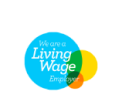Once upon a time there was a big scary world of web design where small agencies struggled to fight against their biggest adversary… Time.
This was around the same time that a good developer was like gold-dust. I remember to this day when I was young and new to the agency I’d often help out and take calls when everyone else was busy, only to find a recruiter on the other end of the phone trying to subtly check if they were speaking to a developer… so that they could poach them! Time and resource management is always the burden of any project, so what if I told you there was a solution that made us work smarter and allowed us to free up development and production teams to focus on the things that really matter… The things that make people go WOW! That’s where low-code applications come in.
Global research and advisory firm Gartner forecasts that by 2024 75% of large enterprises will be using low-code development tools1. Let’s find out why.
A framework for the future
The fact is, time is still the single most important resource to an agency when managing a project. Time is expensive. And after all that time and money has been spent on your website, no matter how polished it may look or how well it performs, guess what… Web trends and technology change; faster than you can keep up. Even your company image and brand positioning could change every few years. Our client Steamship Mutual are facing this exact same dilemma right now… a brand update at the tail end of a project. Something that 4 years ago would have made my head explode! With a low-code solution everything exists in an ecosystem within a single code base so something as drastic as changing your entire brand can take weeks, not months.
And that’s the beauty of low-code applications. They have a tried and tested framework that coupled with a creative agency can save you a lot of grief from the get go, allowing you to put time and money towards what will really set you apart in this world; content and strategy. Now they are not a one stop solution and definitely not a 1-size fits all but having had a play myself with some online web builder services such as Wix, Squarespace and Wordpress I can tell you that Site Studio can offer more flexibility which makes it perfectly suited for the commercial world. I struggled enough with some of these platforms when I was attempting something as simple as creating a portfolio website many years ago. But with over 4 years using Site Studio as an active Acquia partner we’ve helped a multitude of web-based professionals achieve greatness in timeframes deemed near impossible, so I’d say we are onto something good!

A smarter, more time efficient solution
The biggest learning of my career to date was realising working ‘smarter’ trumps working ‘harder’. Over the past 8 years of working in digital I’ve experienced some painful roadblocks in the web development process… from both an agency perspective and also hearing the pain points of the marketing team at the other end of the phone. I have found myself hitting a brick wall time and time again, where a team on a project has no available development resource which has stalled a project for a week, just to do something as small as change the layout of a page.
On the other foot I’ve shared the disappointment of having to tell a client that a project will take a lot longer than expected meaning they have had to completely change their marketing campaign. I’ve shared the struggle of clients having to repetitively change the same content on an endless sea of pages. Literally sharing the work-load myself where my time could be better spent helping them to enhance the performance of their website.
Fast-forward to today and that’s exactly what me and my team are doing, using our time to elevate the user's experience. Even in the midst of a pandemic, Site Studio is empowering both our clients and my own team to realise a project's vision, test and change the user experience before the website’s even launched.
One prime example of this is 15below, a client of ours who offer fully automated travel communications software for the travel industry. Overnight the industry came to a standstill and due to cancelation of events their prospect leads for new business had turned dry. We managed to rebuild their website in just 10 days which simply would not have been possible with a high-code build. We even went one further by launching 2 separate campaigns side-by-side to help them turn a crisis into an opportunity – gaining them 2 new clients (which when talking about airlines, is huge). Before Site Studio we would probably still be building the website let alone launching a campaign!
Baked-in usability feeds creativity
As a creative I’ve often found myself in a position where I’ve had to compromise a solution because of time and resources where the original vision would have taken the project to the next level. Gone are those days thanks to low-code.
I mentioned earlier my gripes of trying to create my own portfolio (back when I had hair) due to the limitations of the low-code solutions I was attempting to use. Staying on top of trends, I recently gave Webflow a run for its money. As great as it is from a flexibility perspective I’d go as far as saying it stifled me with its overwhelming options. Just like everything out there, it’s amazing at what it does for but for a niche audience. There are a lot of creative websites out there that need this kind of custom setup – but for others this is erring on the side of style over substance. Creativity truly lies in the content. Content is king.

At Coherence Digital, we create solutions that lock down all of the templates and components of your site, so you can forget about the complicated setup and focus on creating content that connects with your user. Unit4 came to us to re-build their website on Drupal 9 as a bullet-proof design system to build their entire global product partner sites from. Working with Site Studio allowed our development to focus on baking in flexible functionality and accessibility best practices as standard. In tandem with building these sites Unit4’s recruitment team were looking to drive their recruitment. I was able to work with the Unit4 recruitment team to expand on this system and design a brand-new Careers site. Our time was freed up to focus on creating an interactive wall on their homepage and work together to curate content that offered an inside view of what it’s like to work for Unit4. Before the days of low-code we wouldn’t have dreamed of fitting this project in at such short notice and the outcome might have been very different.
So, who’s the winner?
Whether you’re looking to showcase your company products and flex your marketing material with ease or after a no-nonsense rigid design system accessible to all, then low-code is a no-brainer. Coherence Digital is currently giving the Government Design System a run for its money… Now it doesn’t get more user accessible than that. However, if you’re a creative agency you may be after something a little more on the high-code end of the spectrum. Just pack a lunch, there’s a long road ahead of you!
If you’re still undecided, here’s some further reading that’ll help:
- Building and launching 5 global sites in 10 weeks
- Award-winning case study: Re-platforming in a crisis
- Bringing digital efficiencies to the Public Sector
1 Gartner. Low-Code Development Technologies Evaluation Guide, Paul Vincent, Mark Driver, Jason Wong, 26 February 2019







